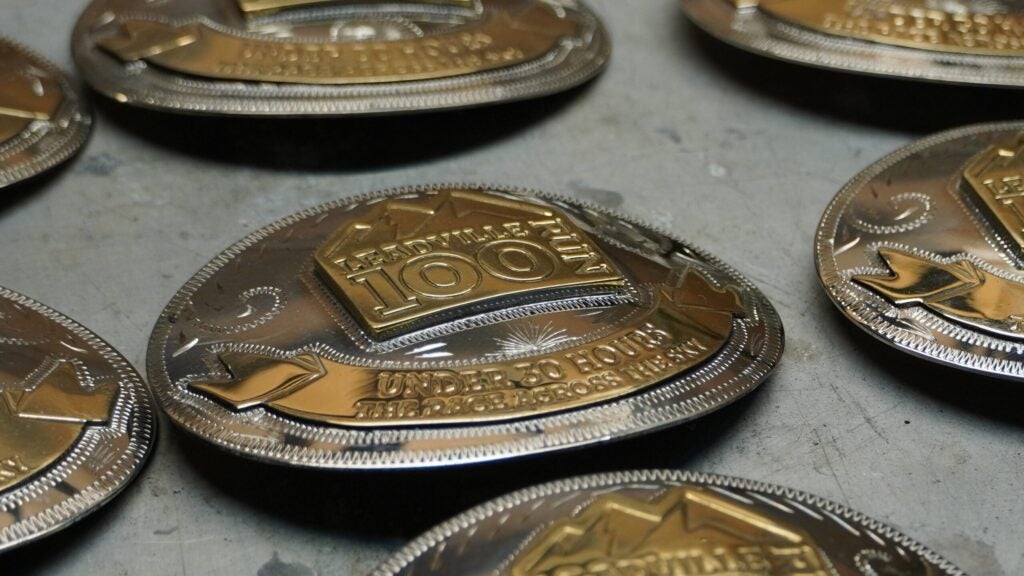No products in the cart.
Outdoor Adventure
How the Leadville 100 Belt Buckle Became a Coveted Prize
Would you run 100 miles through the Rocky Mountains to earn a big, shiny, handmade Western-style belt buckle, even if it’s something you might not actually ever wear?
If you’re not one of the many thousands of intrepid—some say crazy—ultrarunners who’ve toed the start line at the Leadville Trail 100-mile footrace over the past 40 years, the answer might surprise you.
If you are one however, it’s likely that you’ve run, walked, hiked—and maybe even been willing to crawl—at various points of the 100 miles over sections of singletrack trails, gravel roads, paved streets, and 12,600-foot Hope Pass to earn your buckle. Set entirely above 9,200 feet in elevation, the race sends runners up and down more than 15,600 feet of climbing and descending.
To earn a buckle, runners have to endure the altitude and all types of weather—while managing individual fueling challenges and a positive mental outlook—and reach the finish line in 30 hours or less. It’s a daunting feat that rarely sees more than 50 percent of its competitors, many of whom are coming from sea level, finish in time to claim an elusive buckle.
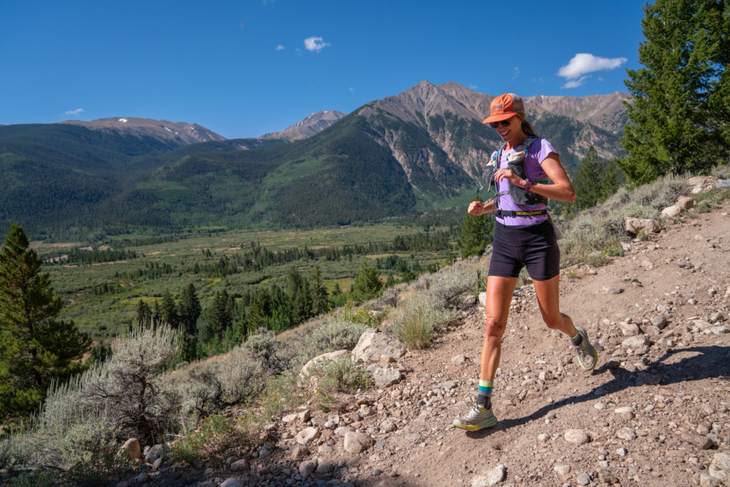
For Barbara Powell, a 35-year-old trail runner from Minneapolis who finished Leadville 100 in 28 hours, 15 minutes in her first attempt last year, the buckle she earned is a constant reminder of the blood, sweat, tears, hard work, and sacrifice she put into it, as well as a memento that encourages her to take similarly bold leaps again in the future.
“The buckle is a mighty symbol for me: a symbol of hard work, grit, slight obsession, and forward relentless movement,” Powell says. “It now sits in my home office to remind me that I’m capable of more than I know. Safe to say, I’ll cherish it. I worked pretty damn hard for that chunk of medal.”
Sure, there’s the personal goal achievement, kudos and awe from friends and family, lifelong memories, and all the other great things that come with such an accomplishment. But some would argue that the buckle itself is the most powerful motivator because it’s the physical embodiment of the effort that got those individuals to the finish line.
“There are few awards in the endurance sports world as coveted–or as difficult to earn–as the Leadville Trail 100 Silver and Gold Buckles,” says Michelle Duffy, senior marketing director for Life Time Events, which operates the Leadville Race Series. “The buckle is the ‘why’ for so many of our participants, and we’re proud to retain the symbolism and nods to history that help make them so iconic.”
Erin Knust, 32, an ultrarunner from Grand Rapids, Michigan, who completed the Leadville 100 in 29:12 in 2019, says as soon as she picks up her medal, even five years later, the memories of the race—and the months of training that led up to it—come rushing back to her.
“Many people have medals. Fewer people have belt buckles,” she says. “At least, the belt buckle that signifies to an ultrarunner they did an amazing thing. They did a thing that the world views as crazy. Heck, even we as runners can’t believe we’re doing it sometimes. When I took on Leadville, I never doubted I’d finish, but I also never allowed myself to think of the finish line and the buckle that came with that red carpet. It was a challenging and scary thing I once said I’d never do, but then I faced it head on, and won.”
RELATED: How Reid Burrows Trained Like a Monk for Leadville
Belt Buckles as Finisher Medals
While most marathons and half marathons have given runners large, chunky medals for finishing since the early 2000s, Western-style belt buckles have been tied to ultrarunning for decades. The first time an ultra race awarded a belt buckle to the top finishers was in 1958 at a 30-miler organized by Ted Corbitt at New York City’s McCombs Dam Park. But buckles were awarded as far back as the 1870s in Great Britain, according to ultrarunning historian Davy Crockett.
Gordy Ainsleigh was the first recipient of a belt buckle in a 100-miler after he famously completed the course of California’s 100-mile Western States Trail Ride equestrian event on foot in 1974. That led to the start of the Western States Endurance Run in 1978, and with it, a new wave of 100-mile trail running races that began in the 1980s—including the Leadville 100.
The Leadville 100 footrace got started after the local community was rocked to its core when the nearby Climax Mine shut down in 1981, leaving more than 3,000 local residents suddenly unemployed. The intention behind the race was to bring more people to Leadville to help revitalize the failing economy. Only 45 runners started the first-ever LT100 in August 1983 and only 10 finished.
But it created a buzz in the nascent trail running community and the numbers grew year after year, and more Leadville running and mountain bike races sprouted, helping the town recover and ultimately prosper again through what has become part of the boom of recreational tourism.
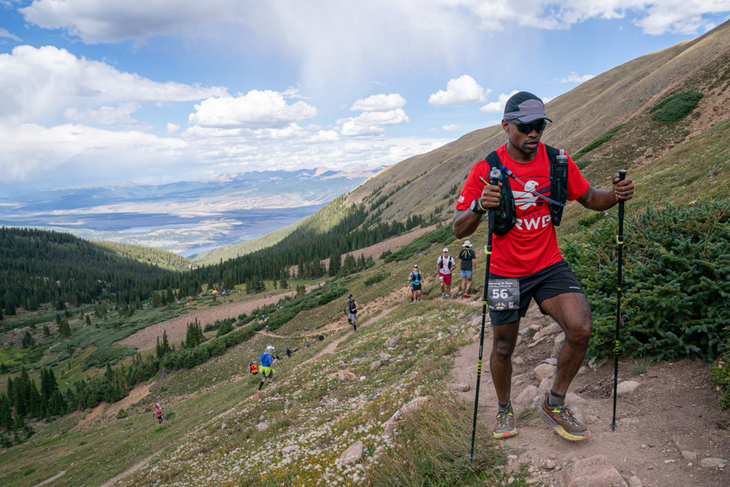
When it came to choosing a finishers’ award, Ken Chlouber and Merliee Maupin—two of the original conspirators behind the race, along with original race director Jim Butera—tapped into their cowboy roots, and a belt buckle was the obvious choice.
“Marilee and I are both farm kids; I grew up on a piece of red dirt in Oklahoma, and everything was cowboys and rodeos,” Chlouber says. “They were really proud of their big buckles. I still wear one of mine every time I wear a belt.”
The first two Leadville races featured buckles made by a national western-wear manufacturer who was able to stamp them out of a press quickly on short notice. However, Chlouber and Maupin were fully committed to the sense of community, family and Colorado history, so ultimately they wanted the metalsmith making the Leadville buckles to be local and, as Chlouber says, “the right fit.”
“They’re much more than just belt buckles,” Chlouber says.
“They say, about anyone who has earned one, ‘I never quit!’” Maupin adds. “They’re a powerful symbol of the grit, guts and determination of the runners who earn them.”
RELATED: Developing Durability in Ultrarunning
A Family Tradition
Enter Denver-based Colorado Silver Star, and the Sanchez family who has run it since its inception in the early 1970s. Started by the late Serafin Manuel Sanchez, the business originally toiled in buying and selling Native American jewelry before it got into the buckle business. The metalsmithing operation is now run by his son, Serafin Alfredo Sanchez, who has overseen the handcrafting of every Leadville race finisher’s buckle since 1985.
The task of creating a few hundred buckles for the Leadville 100 was daunting from the start—especially after the Leadville 100 mountain bike race got started in 1994—but Colorado Silver Star has always produced the goods on time, he says, if occasionally at the last minute.
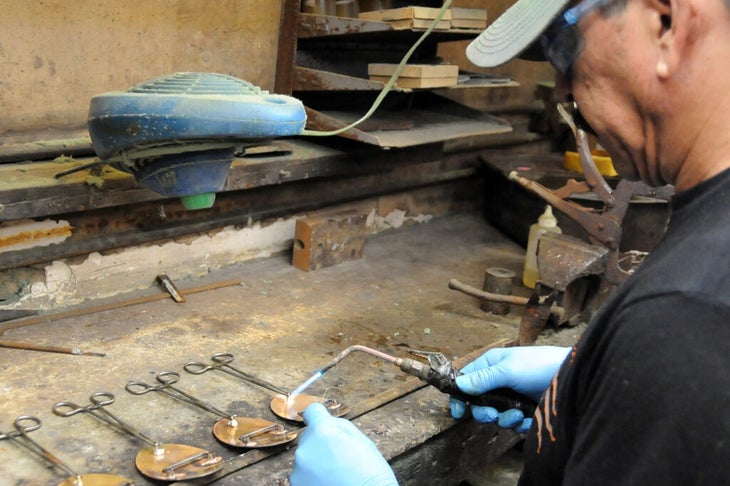
Life Time bought the rights to the Leadville events in 2011 and began growing the races, but other than a few minor tweaks, the buckles remained true to the original designs.
“The process is extremely labor intensive, since every buckle we make for the Leadville race is handmade from start to finish,” Sanchez says. “We begin with a flat piece of metal, then we stamp it, and bend it to shape. Then we solder on the ribbons by hand, and the engraver etches in the details. Finally we burn in the engravings to blacken the outlines.”
In between every one of those steps, the buckles must also be buffed, polished and brushed out. And then they’re all buffed and polished again to achieve the final finish, which often requires temporary workers to get them all done in time for the race.
For this year’s Leadville 100 mountain bike race on August 10, Colorado Silver Star delivered 1,920 buckles—600 large buckles for sub-9-hour finishers, 1,300 smaller buckles for sub-12-hour finishers, 20 oversized buckles for 10-year, 1,000-mile finishers, and two massive buckles for John Callahan and Todd Murray in honor of 30 consecutive race finishes.
For the Leadville Trail 100 run on August 17, Sanchez and his staff have been working feverishly to finish 805 handcrafted buckles in the week leading up to the race. That’s 200 large gold buckles for sub-25-hour finisher’s, 600 smaller silver buckles for sub-30-hour finishers, and five massive buckles for this year’s 10-race, 1,000-mile finishers.
“It’ll be close this year too, but we’ll make it,” Sanchez said earlier this week. “It’s definitely a challenge, and we’ve finished in the nick of time more than once. I remember having to drive up with the final batch one year, just in time for the award ceremony where everyone gets their buckles.”
RELATED: 10 Rules for Altitude Training
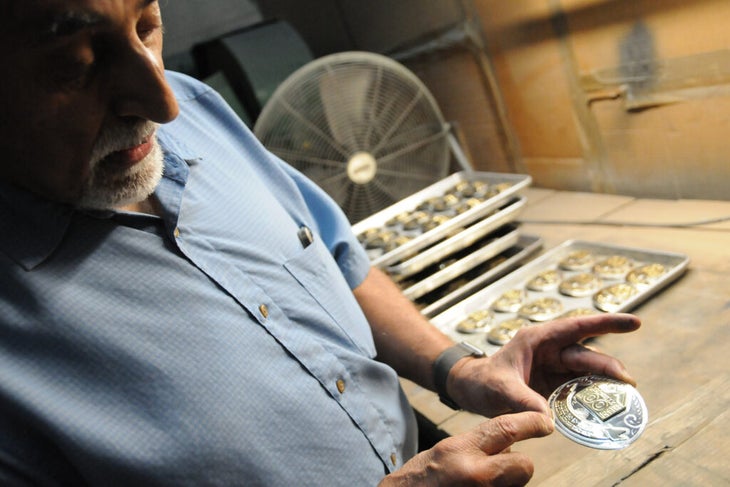
It’s a labor of love now for the Sanchez family, and they’re well aware of the importance of these buckles to the runners (and mountain bikers) who earn them. Occasionally, he’s seen someone wearing one around on the streets in Denver, and his daughter in-law has an uncle who earned one. He always goes out of his way to greet those people and let them know his family business made their buckle.
“I remember when I first attended the award ceremony and was able to watch the runners get their hard-earned buckles,” he says. “I came to the realization how important these are to the finishers. Watching them open the box and seeing their eyes beaming at this symbol of their accomplishment… it’s very emotional. We know it’s a special memento for the runners and bike riders, and that’s why we put so much hand-crafted effort into each one.”
RELATED: ‘Ultrarunning for Normal People’ Offers a Low-Key, Alternative to Trail Running
Source link

